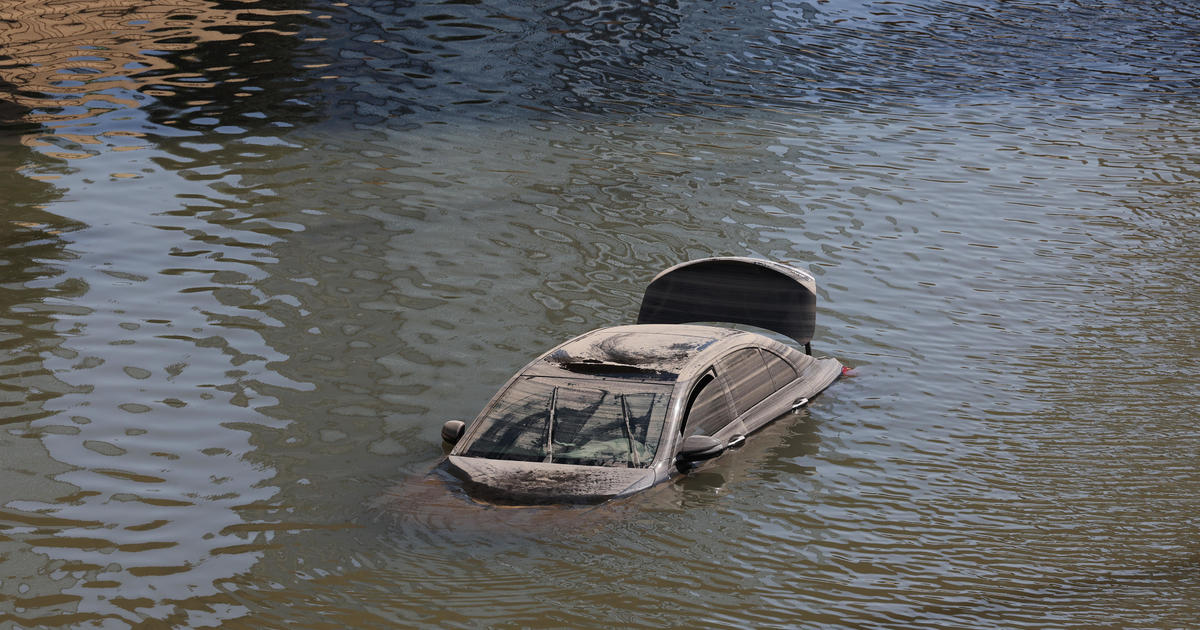SpaceX launch weather outlook continues to improve
Watch live coverage on CBSN this Wednesday, May 27. Launch is scheduled for 4:33 p.m. EDT.
Buoyed by an improving forecast, SpaceX engineers pressed ahead Tuesday with final preparations for launch of a Falcon 9 rocket and Crew Dragon spacecraft Wednesday on the first piloted flight to orbit from American soil since the space shuttle was retired in 2011.
Over the weekend, forecasters with the 45th Weather Squadron at nearby Patrick Air Force Base were predicting a 60% chance of rain and clouds that could delay launch. But by Tuesday, the outlook had improved to 60% "go" for a launch attempt at 4:33:35 p.m. EDT Wednesday.
While the forecast does not include the outlook for downrange abort zones where the astronauts could be forced to ditch in the unlikely event of a catastrophic booster failure, officials said conditions in the Atlantic Ocean along the capsule's northeasterly trajectory are generally favorable.
"I would say it's looking OK," said Daniel Forrestel, launch integration manager for NASA's Commercial Crew Program. "I think our biggest risk right now is the weather on the pad. ... But it's never completely risk free downrange."
Launch managers will make a final assessment about 45 minutes before launch when the astronauts would normally arm the abort system a few minutes before fueling begins. If the weather is not favorable, launch will be called off at that point and the team will recycle for a second launch try Saturday at 3:21 p.m.
Douglas Hurley and Robert Behnken, the NASA astronauts who will ride to orbit in the Crew Dragon, attended a series of technical briefings and spent time with their families on the eve of their historic launch, a flight marking the resumption of U.S. astronaut flights after nearly a decade.
Several hundred thousand spectators normally would attend a launch of such magnitude, but NASA implemented strict coronavirus restrictions at the Florida spaceport, ruling out on-base public viewing, strictly limiting the number of reporters allowed on site and holding virtual briefings with no direct physical contact.
NASA Administrator Jim Bridenstine held a virtual pre-launch news conference Tuesday, speaking to a nearly empty room at the press site that normally would be packed with reporters.
"We would love to have this room full," he said. "We would love to have it filled with reporters, we'd love to have it filled with space enthusiasts, and unfortunately we're in the middle of the coronavirus pandemic.
"Our country has been through a lot. But this is a unique moment where all of America can take a moment and look at our country do something stunning again, and that is launch American astronauts on American rockets from American soil."
He said the Crew Dragon launch represented "a unique opportunity to bring all of America together in one moment in time and say look at how bright the future is. That's what this launch is all about."
NASA is spending about $6 billion funding development of SpaceX's Crew Dragon and Boeing's CST-100 Starliner capsule in a bid to end the agency's sole reliance on Russian Soyuz spacecraft for carrying astronauts to and from the space station.
NASA also hopes the commercial crew ships will be used by Boeing and SpaceX to carry private citizens, whether "space tourists" or private-sector researchers, into space in a bid to open up low-Earth orbit for commercial development, including non-government space stations.
But the Crew Dragon's first piloted test flight has more down-to Earth objectives: proving the capsule and safely put astronauts in orbit, rendezvous and dock with the space station and return to Earth with an ocean splashdown.
If all goes well, the Crew Dragon will reach orbit about 12 minutes after liftoff, kicking off a 19-hour rendezvous with the International Space Station. While the mostly automated chase unfolds, Hurley and Behnken will take hands-on control twice to test the crew's ability to manually steer the spacecraft if necessary.
Docking at the forward port of the station's Harmony module is expected around 11:40 a.m. Thursday. After extensive leak checks, Hurley and Behnken will be welcomed aboard the space lab by Expedition 63 commander Chris Cassidy and cosmonauts Anatoly Ivanishin and Ivan Vagner.
The Crew Dragon astronauts are expected to remain aboard the station for at least six weeks and possibly as long as four months, helping Cassidy with a full slate of research and, possibly, with one or more spacewalks to install new solar array batteries and complete installation of a European experiment platform.
NASA managers are holding off making a decision on mission duration until they get a better idea how the capsule's solar cells hold up in the space environment.
An eventual landing date also will depend on the summertime weather off the coast of Florida, where Hurley and Behnken will splash down, and the time needed to evaluate the capsule's performance in general before the next Crew Dragon flight, currently targeted for the end of August.





